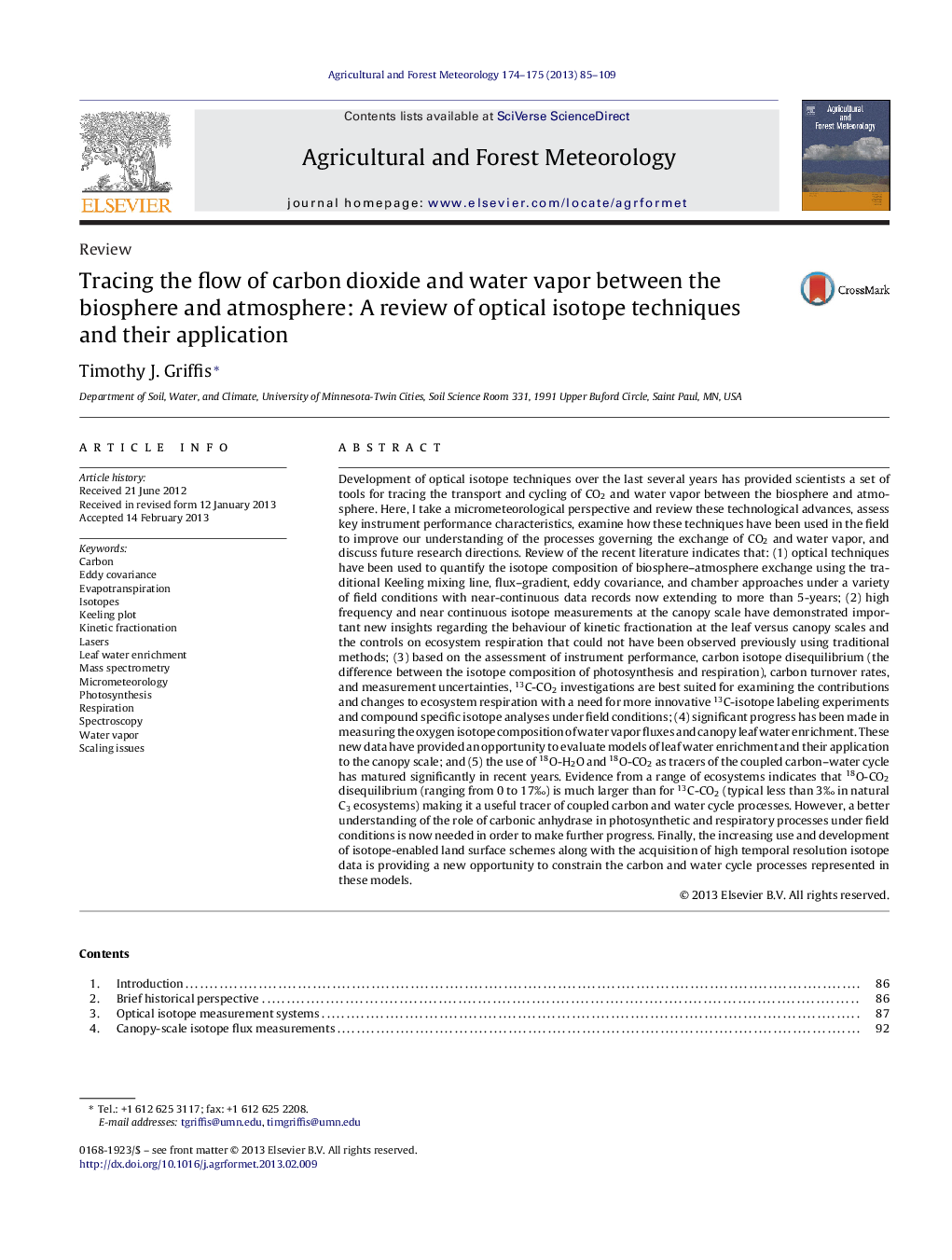| کد مقاله | کد نشریه | سال انتشار | مقاله انگلیسی | نسخه تمام متن |
|---|---|---|---|---|
| 81779 | 158350 | 2013 | 25 صفحه PDF | دانلود رایگان |

Development of optical isotope techniques over the last several years has provided scientists a set of tools for tracing the transport and cycling of CO2 and water vapor between the biosphere and atmosphere. Here, I take a micrometeorological perspective and review these technological advances, assess key instrument performance characteristics, examine how these techniques have been used in the field to improve our understanding of the processes governing the exchange of CO2 and water vapor, and discuss future research directions. Review of the recent literature indicates that: (1) optical techniques have been used to quantify the isotope composition of biosphere–atmosphere exchange using the traditional Keeling mixing line, flux–gradient, eddy covariance, and chamber approaches under a variety of field conditions with near-continuous data records now extending to more than 5-years; (2) high frequency and near continuous isotope measurements at the canopy scale have demonstrated important new insights regarding the behaviour of kinetic fractionation at the leaf versus canopy scales and the controls on ecosystem respiration that could not have been observed previously using traditional methods; (3) based on the assessment of instrument performance, carbon isotope disequilibrium (the difference between the isotope composition of photosynthesis and respiration), carbon turnover rates, and measurement uncertainties, 13C-CO2 investigations are best suited for examining the contributions and changes to ecosystem respiration with a need for more innovative 13C-isotope labeling experiments and compound specific isotope analyses under field conditions; (4) significant progress has been made in measuring the oxygen isotope composition of water vapor fluxes and canopy leaf water enrichment. These new data have provided an opportunity to evaluate models of leaf water enrichment and their application to the canopy scale; and (5) the use of 18O-H2O and 18O-CO2 as tracers of the coupled carbon–water cycle has matured significantly in recent years. Evidence from a range of ecosystems indicates that 18O-CO2 disequilibrium (ranging from 0 to 17‰) is much larger than for 13C-CO2 (typical less than 3‰ in natural C3 ecosystems) making it a useful tracer of coupled carbon and water cycle processes. However, a better understanding of the role of carbonic anhydrase in photosynthetic and respiratory processes under field conditions is now needed in order to make further progress. Finally, the increasing use and development of isotope-enabled land surface schemes along with the acquisition of high temporal resolution isotope data is providing a new opportunity to constrain the carbon and water cycle processes represented in these models.
► Optical isotope sensors are reviewed.
► Isotope fluxes reveal new insights regarding fractionation and leaf water enrichment.
► Fast optical isotope measurements reveal new insights about ecosystem respiration.
► 18O-CO2 disequilibrium is large (up to 17‰) across a broad range of ecosystems.
► Research needs include field isotope tracer studies with isotope-enabled models.
Journal: Agricultural and Forest Meteorology - Volumes 174–175, 15 June 2013, Pages 85–109